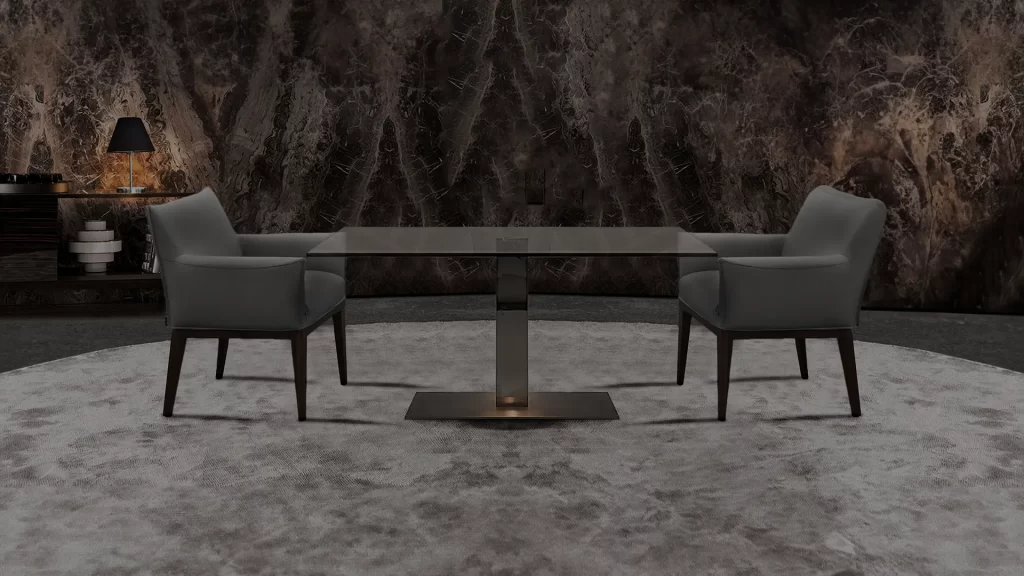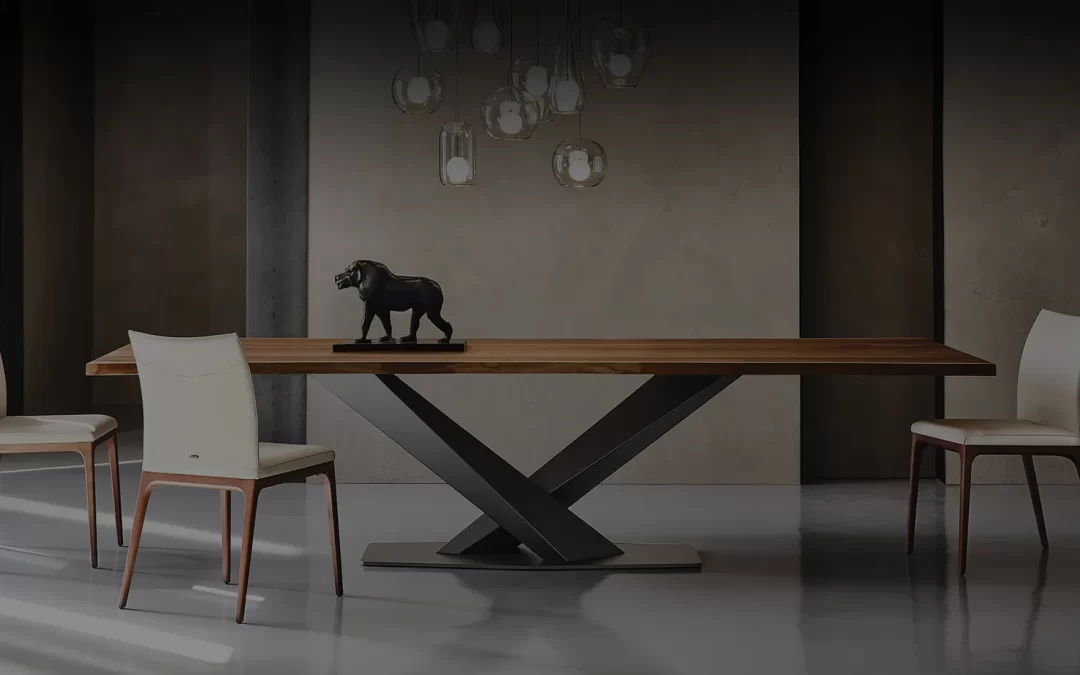When you step into a restaurant, it’s not just the aroma of delectable dishes that welcomes you; it’s an entire world created through restaurant interior design. Every corner, every wall, and every piece of furniture plays a part in telling a story.
In this world, colors, textures, and lighting weave the narrative, making your dining experience about much more than just food. This is about an environment that captivates your senses, evoking emotions and creating memories.
That’s the power of restaurant interior design, an art form that transforms dining into an immersive experience.
This blog explores how interior design influences and enhances the dining experience. From the initial impression to the lingering sense of satisfaction as you exit, every aspect plays an important role.
Join us as we explore the fusion of culinary art and design expertise that shapes our experiences in the most subtle and profound ways.
The Impact of First Impressions
Imagine walking into a restaurant where the ambiance instantly transports you to a different world…
The first few seconds are critical in shaping your perception and expectations. This is where restaurant interior design casts its first spell.
A thoughtfully designed entrance and an inviting atmosphere are not just visually appealing choices, but strategic design decisions.
Take, for instance, a fine dining restaurant by the sea. Upon entering, you notice the elegant chandeliers that mimic the gentle lapping of waves, while the soft, sandy tones of the walls and furniture mimic the beach.
Similarly, a vibrant eatery in the city’s heart might use bold colors and modern art to reflect its dynamic surroundings. Here, the design does more than please the eye; it energizes and prepares you for an adventurous culinary journey.
In both cases, the first impression sets the tone for what’s to come.
A well-executed restaurant interior design captivates and subtly informs guests about the type of experience they can expect.
Crafting the Perfect Ambiance
The perfect restaurant ambiance is a symphony of various design elements, each contributing to an overall feeling of harmony. This is where interior design truly shines, showcasing its ability to influence the dining experience.
Color: The Emotional Palette
Color plays a pivotal role in setting the restaurant’s mood. Warm hues like reds and oranges often stimulate appetite and create a lively atmosphere, ideal for social dining spaces. The designer chooses cooler tones to create a relaxed and serene dining environment, perfect for intimate gatherings.
The colors chosen are not just a backdrop but an active participant in the dining experience.

Lighting: The Play of Shadows and Light
Lighting is another critical design feature that can dramatically alter the restaurant’s ambiance. Soft, diffused lighting creates a cozy and intimate setting, inviting guests to relax and linger. Brighter lights energize the space, suitable for a more casual and upbeat dining scene.
The clever use of lighting can also highlight certain architectural or design features, directing the diner’s attention to specific aspects of the decor.
Layout: Arranging the Space
The restaurant’s layout lays the foundation for the dining experience. It involves strategic placement of tables, chairs, and other elements to ensure comfort, privacy, and ease of movement. A well-designed layout can enhance social interaction, facilitate efficient service, and even influence the pacing of a meal.
The layout plays a crucial role in crafting the desired dining atmosphere.
Design That Speaks to the Cuisine
Restaurant interior design seamlessly aligns with the cuisine being served to create the most enchanting dining experiences. This harmonious pairing elevates the meal from a mere act of eating to a comprehensive sensory event. A restaurant’s design should reflect its culinary identity, offering a visual and spatial narrative that complements the food.
Thematic Alignment: A Culinary Journey
Consider a rustic Italian trattoria, where the design elements transport you to the sun-drenched hills of Tuscany. The terracotta tiles, rough-hewn wooden tables, and walls adorned with vintage Italian posters are not just decor; they are integral to the dining experience.
As you savor a plate of authentic pasta, the surroundings amplify the rustic charm of the cuisine.
In contrast, a sleek sushi bar might embrace minimalism to reflect the precision and simplicity central to Japanese cuisine.
Subtle lighting, a monochromatic color scheme, and clean lines mirror the elegance and refinement of the dishes being served. This design approach creates a serene environment that allows the artistry of the sushi chef to take center stage.
Cultural Reflections: Beyond Borders
Restaurant design can also be a canvas for cultural storytelling.
A fusion cuisine restaurant might blend design elements from different regions to create a space that constasts its menu. By mixing patterns, textures, and artifacts from various cultures, the design becomes a visual metaphor for culinary fusion.
Sensory Harmony: A Feast for the Senses
Ultimately, the goal of aligning interior design with cuisine is to create a multi-sensory dining experience.
The visual elements of design should complement the food, creating a cohesive and immersive experience. A well-designed restaurant tells a story with every corner, every plate, and every bite, turning a meal into a memorable journey.
Comfort and Functionality: The Unsung Heroes
While the aesthetic aspects of restaurant interior design often steal the spotlight, comfort and functionality are equally important. These unsung heroes of design ensure that a restaurant is not only a feast for the eyes but also a haven of comfort and efficiency.
Seating: More Than Just a Place to Sit
Comfortable seating is paramount in any restaurant setting. Chairs and booths are not just furniture pieces; they are where guests spend most of their time while dining.
The choice of seating should reflect the restaurant’s style and the expected duration of a meal. For instance, a quick-service cafe might opt for more casual, functional seating, while a fine dining establishment would focus on plush, luxurious chairs that invite guests to linger over their meal.

Spacing: Balancing Intimacy and Ease of Access
Effective use of space is a critical aspect of restaurant design. Adequate spacing between tables ensures privacy and comfort, allowing diners to enjoy their meals without feeling crowded. At the same time, it’s important to maintain a layout that allows for a smooth flow of movement for both guests and staff. This balance is key to creating an environment that feels both intimate and accessible.
Acoustics: The Sound of Comfort
Restaurant design often overlooks good acoustics, yet they significantly influence the dining experience. Managing the sound levels in a restaurant can make the difference between a comfortable atmosphere and a noisy one.
The use of sound-absorbing materials, strategic layout design, and even background music are crucial in creating a pleasant auditory environment.
Temperature and Lighting: The Subtle Atmosphere Setters
The right temperature and lighting in a restaurant contribute significantly to guest comfort. Lighting should be adaptable to create the right mood at different times of the day while maintaining functionality.
Similarly, maintaining a comfortable temperature, considering factors like kitchen heat and external weather, is essential for an enjoyable dining experience.
These functional aspects of Restaurant Interior Design may not always be immediately noticeable, but their impact on the overall dining experience is undeniable. Skillfully integrating comfort and functionality into the design upgrades the sensory journey of the diner, making each visit memorable.
Comfort and Functionality: The Unsung Heroes
While aesthetics take center stage in Restaurant Interior Design, we cannot overstate the importance of comfort and functionality. These aspects might not always grab the headlines, but they are fundamental to a positive dining experience. A beautifully designed restaurant that overlooks these practical elements can quickly lose its charm.
Comfort: The Key to Relaxation
Comfort in a restaurant setting goes beyond plush seating. It encompasses the entire physical experience of the diner. This includes ergonomic chairs that support a relaxed posture, spacious tables that don’t cramp dining, and adequate room between tables to ensure privacy and ease of movement.
The tactile sensations contribute to the comfort level, making the dining experience more enjoyable and memorable.
Functionality: Seamless Dining
Functionality is about the efficiency and flow of the restaurant space. It’s crucial for both diners and staff.
A well-designed restaurant will have a layout that allows for smooth service, with easy access for waitstaff and an intuitive flow for diners. Consider the placement to minimize disruption and enhance the overall efficiency of the space.
Acoustics: The Overlooked Element
One often overlooked aspect of restaurant design is acoustics. The ability to hold a conversation without straining over background noise is a key component of a comfortable experience.
In sum, comfort and functionality might not be the most glamorous aspects of restaurant interior design, but they are the backbone of success. They ensure that the restaurant not only looks good but also feels good.
Integrating Local Culture and Trends
A truly captivating interior design doesn’t just create a beautiful space; it tells a story that resonates with its locale and reflects contemporary trends. Integrating local culture and current trends adds depth and character to the dining experience, making it uniquely memorable.
Embracing Local Heritage
Adding local art, craftsmanship, and motifs into a restaurant’s design can create a deep connection with the community. This is about celebrating the heritage and traditions of the area.
For instance, a restaurant in New Orleans might feature Creole architecture, local jazz artwork, and wrought-iron details, immersing diners in the rich cultural tapestry of the city. This approach not only adds genuineness but also fosters a sense of pride and belonging among local patrons.
Trend Adaptation: Staying Relevant
While honoring local culture, it’s equally important for a restaurant to stay current with design trends. This could mean adopting eco-friendly practices, integrating smart technology for an interactive dining experience, or embracing minimalist designs that reflect modern aesthetic preferences.
However, the trick lies in balancing trendiness with timelessness, ensuring the design remains relevant in the long run.
A Fusion of Old and New
The most exciting designs often emerge from combining traditional elements with modern trends. This fusion not only creates a visually stunning environment but also tells a story of evolution, bridging the past with the present.
Community Engagement
Finally, a restaurant that reflects its local culture and trends becomes more than just a place to eat; it transforms into a community hub. It’s a space that resonates with the locals, inviting them to celebrate their community while enjoying a meal.
Conclusion
In conclusion, restaurant interior design is crucial in shaping the dining experience. From creating a compelling first impression to crafting a comfortable and functional environment, every design element contributes to the story that a restaurant wishes to tell.
Whether aligning the interior with the cuisine or reflecting local culture, thoughtful design can transform a simple meal into a memorable experience.
As we have explored, the design creates an ambiance that enhances the culinary journey. The integration of comfort and functionality ensures that this journey is as pleasant as it is memorable. And by embracing local culture and sustainable practices, restaurants can forge deeper connections with their community and the environment.

